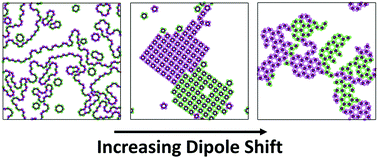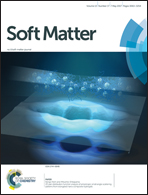Simulation study on the structural properties of colloidal particles with offset dipoles
Abstract
A major research theme in materials science is determining how the self-assembly of new generations of colloidal particles of complex shape and surface charge is guided by their interparticle interactions. In this paper, we describe results from quasi-2D Monte Carlo simulations of systems of colloidal particles with offset transversely-oriented extended dipole-like charge distributions interacting via an intermediate-ranged Yukawa potential. The systems are cooled slowly through an annealing procedure during which the temperature is lowered in discrete steps, allowing the system to equilibrate. We perform ground state calculations for two, three and four particles at several shifts of the dipole vector from the particle center. We create state diagrams in the plane spanned by the temperature and the area fraction outlining the boundaries between fluid, string-fluid and percolated states at various values of the shift. Remarkably we find that the effective cooling rate in our simulations has an impact on the structures formed, with chains being more prevalent if the system is cooled quickly and cyclic structures more prevalent if the system is cooled slowly. As the dipole is further shifted from the center, there is an increased tendency to assemble into small cyclic structures at intermediate temperatures. These systems further self-assemble into open lattice-like arrangements at very low temperatures. The novel structures identified might be useful for photonic applications, new types of porous media for filtration and catalysis, and gel matrices with unusual properties.



 Please wait while we load your content...
Please wait while we load your content...